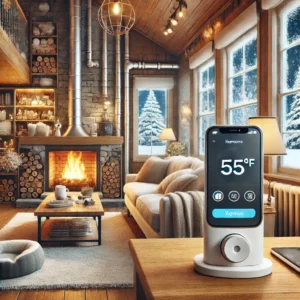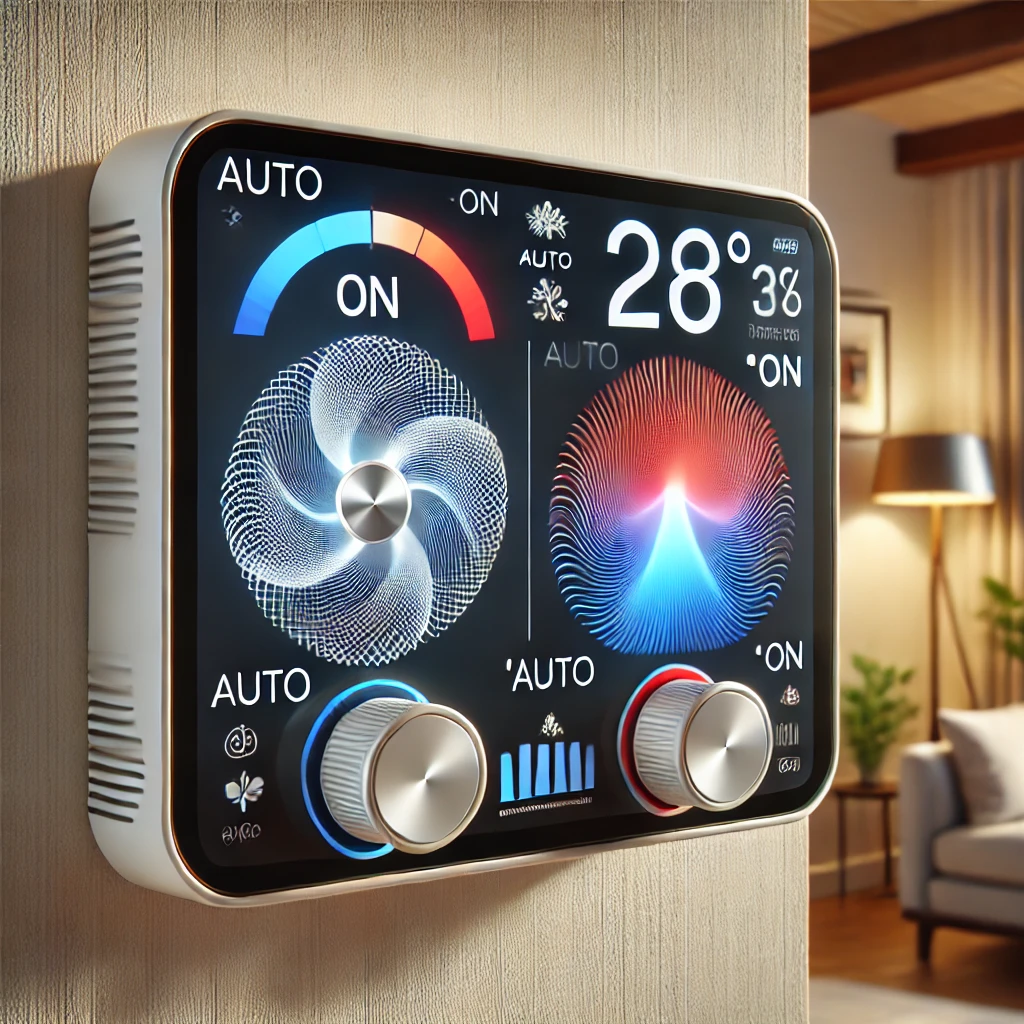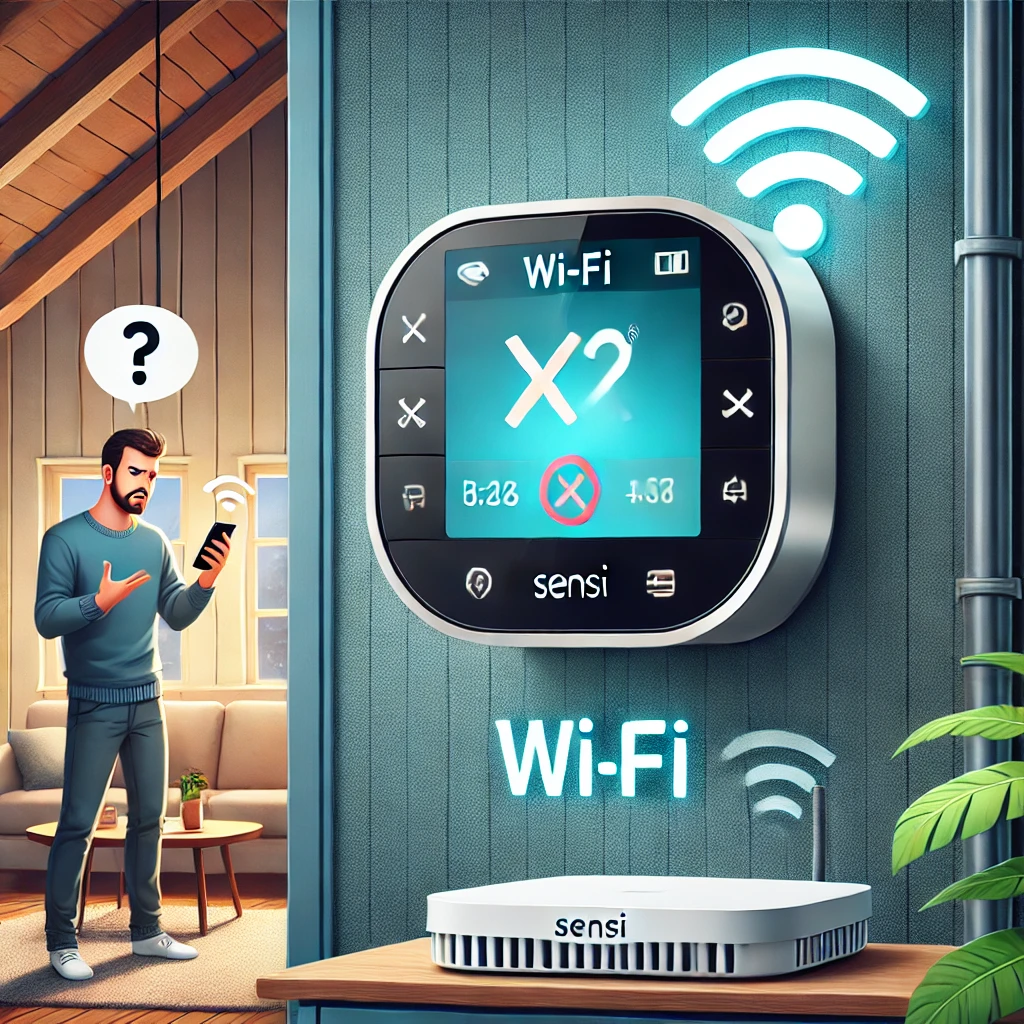What Temperature to Set Your Thermostat When on Vacation in Winter
Packing your bags for a well-deserved winter getaway is exciting. You’ve arranged for a pet sitter, stopped the mail, and triple-checked your flight times. But in the flurry of pre-vacation tasks, there’s one crucial detail homeowners often overlook: the thermostat. Setting it too high means wasting a fortune on heating an empty house. Setting it too low—or turning it off completely—risks a catastrophic welcome home present: burst pipes and thousands of dollars in water damage. So, what’s the magic number?
Finding that perfect balance between energy savings and home protection is key. This comprehensive guide will walk you through exactly what temperature to set your thermostat to when you’re on vacation in the winter, why it matters so much, and how modern technology can give you ultimate peace of mind.
I’ve seen the devastating aftermath of a frozen pipe more times than I can count. A simple adjustment on your thermostat is the single most effective insurance policy against a multi-thousand dollar disaster. Homeowners often think they’re saving money by turning the heat way down, but they’re unknowingly gambling with their home’s plumbing system.
The Golden Rule: The Ideal Vacation Thermostat Setting
Let’s cut to the chase. For the vast majority of homes in the U.S. during winter, the recommended temperature to set your thermostat when you’re away is between 50°F and 60°F (10°C to 15.5°C).
The sweet spot within this range for most modern, well-insulated homes is 55°F (13°C). This temperature is low enough to generate significant energy savings compared to your usual setting but high enough to provide a robust safety buffer against freezing temperatures, protecting your pipes, appliances, and home structure.
Never Turn Your Heat Completely Off in Winter!
This is the most critical piece of advice. While it seems like the ultimate money-saver, turning off your heating system in winter is an invitation for disaster. Without any heat source, the indoor temperature can plummet to match the outdoor temperature. Once it drops below 32°F (0°C), the water in your pipes can freeze, expand, and burst, leading to severe flooding upon thawing.
Why Setting the Right Temperature is Non-Negotiable
The primary reason for keeping your heat on is to prevent your home’s pipes from freezing. When water freezes, it expands by about 9 percent. This expansion exerts immense pressure on whatever is containing it, whether it’s a copper pipe, PVC pipe, or a fitting. This pressure can easily exceed the pipe’s tolerance, causing it to crack or rupture.
- The Danger Zone: While water freezes at 32°F (0°C), pipes in uninsulated areas like basements, crawl spaces, attics, or exterior walls can reach this temperature even when the main living area is in the 40s. Setting the thermostat to at least 50°F ensures that these vulnerable areas stay safely above the freezing point.
- Cost of a Burst Pipe: According to home services data, the average cost to repair water damage from a burst pipe can range from $5,000 to over $70,000, depending on the extent of the damage. This doesn’t include the cost of replacing damaged furniture, electronics, or personal belongings. A slightly higher heating bill is infinitely preferable.
- Protecting Your Home’s Integrity: Extreme cold can also affect wood floors, drywall, and furniture. Maintaining a stable, albeit cool, indoor environment protects these materials from contracting and warping due to drastic temperature swings.
Factors That Influence Your Perfect Vacation Temperature
While 55°F is a great starting point, it’s not a one-size-fits-all solution. You should adjust your setting based on several unique factors related to your home and your trip.
1. Your Home’s Insulation and Age
How well your home retains heat is a major factor. A newer, well-insulated home with double-paned windows might be perfectly safe at 50°F. However, an older, drafty house with single-paned windows and poor attic insulation will lose heat much faster. For these homes, it’s wiser to err on the side of caution and set the thermostat closer to 60°F.
2. Your Geographical Location and Climate
A homeowner in Miami, Florida, faces a different set of risks than one in Minneapolis, Minnesota. If you live in a region where winter temperatures rarely dip below freezing for extended periods, a lower setting might be acceptable. However, if you live in the Northeast, Midwest, or mountainous regions where sub-zero temperatures are common, you need a higher safety margin. If a severe cold snap is in the forecast while you’re away, setting it to 60°F is a prudent choice.
3. Duration of Your Vacation
Are you leaving for a weekend or a month? For a short trip (2-4 days), the energy savings will be more modest, so you might choose a slightly higher temperature like 58-60°F for peace of mind. For longer vacations (a week or more), the energy savings from a 50-55°F setting really add up, making it a more compelling option.
4. Presence of Houseplants or Pets
If you have a pet sitter visiting but not staying overnight, or if you have temperature-sensitive houseplants, you cannot let the temperature drop to 50°F. Many common houseplants will suffer or die in temperatures below 55°F. For the well-being of plants and the comfort of any pets (even if they have fur coats), it’s best to keep the thermostat at a more stable 60°F to 65°F (15.5°C to 18°C).
5. Type of Heating System
Most furnaces and boiler systems will have no issue maintaining a low temperature. However, some heat pumps, especially in very cold climates, can struggle to operate efficiently at extremely low outdoor temperatures. If you have a heat pump without an auxiliary heat strip (or “emergency heat”), be cautious about setting the thermostat too low, as it may have to run constantly to maintain even 50°F. In this case, consult your HVAC manual or a professional. It’s often better to understand the thermostat instructions for homeowners specific to your system.
Pro Tip: Pre-Vacation Home Check
A week before you leave, turn your thermostat down to your intended vacation setting for a few hours. Walk around your home, especially near exterior walls and in the basement. Feel for any significant drafts or cold spots. This quick test can reveal insulation weaknesses that might need to be addressed, giving you time to add foam faucet covers or seal a drafty window before your trip.
Upgrade Your Control: The Smart Thermostat Advantage
The single best investment for vacation peace of mind is a smart thermostat. These Wi-Fi-enabled devices allow you to monitor and control your home’s temperature from anywhere in the world using your smartphone. This technology transforms your thermostat from a static device into a dynamic home management tool.
Benefits of a Smart Thermostat for Travelers:
- Remote Monitoring: Check your home’s temperature and humidity levels in real-time from the beach or the ski slopes.
- Instant Adjustments: See a report of a polar vortex heading for your town? You can instantly raise the temperature a few degrees for extra protection.
- Smart Alerts: Many models can alert you if the indoor temperature drops below a critical threshold you set, signaling a potential furnace failure. This early warning could be the difference between a simple repair and a full-blown disaster. Sometimes, the issue could be simple, like your thermostat clicking but not turning on, which a neighbor could potentially fix.
- Energy Savings: You can set a low vacation temperature and then remotely begin warming the house a few hours before you return, so you arrive to a comfortable home without wasting energy.
Top Smart Thermostats for Travelers
Here are a few top-rated smart thermostats available on Amazon that are perfect for homeowners who travel.

Google Nest Learning Thermostat
The iconic smart thermostat that learns your schedule. Its “Auto-Away” feature automatically adjusts to an energy-saving temperature when it detects you’re gone.
Pros
- Elegant design
- Learns your habits
- Excellent energy reports
- Remote control via app
Cons
- Premium price point
- Requires C-wire for some systems

ecobee Smart Thermostat Premium
Famous for its included room sensor, the ecobee can ensure specific areas (like a basement with pipes) stay above a certain temperature. It also has a built-in air quality monitor.
Pros
- Includes a SmartSensor
- Excellent app interface
- Built-in Alexa/Siri
- Great for multi-level homes
Cons
- Installation can be more complex
- Relies on cloud for some features

Amazon Smart Thermostat
An incredibly affordable, Energy Star-certified option. Powered by Honeywell Home technology, it offers reliable smart control via the Alexa app without the hefty price tag.
Pros
- Extremely budget-friendly
- Reliable Honeywell tech
- Seamless Alexa integration
- Easy to install and use
Cons
- Requires Alexa for voice control
- Basic design
As an Amazon Associate, we earn from qualifying purchases. The product recommendations above are based on our expert opinion and user reviews.
Frequently Asked Questions (FAQ)
Is it cheaper to leave the heat on or turn it off while on vacation?
It is always cheaper to turn the heat down than to turn it off and have it reheat the entire house from a very low temperature. More importantly, the cost of leaving your heat set to 50-55°F is minuscule compared to the potential cost of repairing damage from frozen pipes. The energy savings are not worth the risk.
What if I have a smart thermostat? What’s the best way to set it?
Use the “Vacation Mode” or “Away” setting. Set a schedule to maintain a low temperature (e.g., 55°F) for the duration of your trip. Set up a low-temperature alert (e.g., if the temperature drops below 45°F) to notify you of a potential furnace problem. A smart thermostat is a great tool, but sometimes you might still run into issues, for example, if your Sensi thermostat is not working with the app, it’s good to troubleshoot that before you leave.
Does opening cabinet doors under sinks really help?
Yes, absolutely. For sinks located on exterior walls, opening the cabinet doors allows the warmer air from the room to circulate around the pipes, providing extra protection against freezing. It’s a simple, free, and effective precaution.
Should I also shut off my main water supply?
For extended vacations (a week or longer), shutting off the main water supply is a highly recommended secondary precaution. If a pipe were to burst despite your best efforts, this action would limit the amount of water damage to only what was already in the pipes. After shutting it off, open the lowest faucet in your house (like in a basement or first floor) to drain the remaining water from the system.
How much money do I actually save by setting my thermostat to 55°F?
According to the U.S. Department of Energy, you can save around 10% a year on your heating and cooling bills by turning your thermostat back 7°-10°F from its normal setting for 8 hours a day. When you do this 24/7 for a week-long vacation, the savings can be substantial, often amounting to 20-30% or more of what you would have paid to heat the home at a comfortable temperature.
Final Thoughts: A Small Step for a Worry-Free Vacation
Setting your thermostat correctly before a winter vacation isn’t just about saving money—it’s about protecting one of your most significant investments. The simple act of setting it to a safe, low temperature like 55°F (13°C) provides the ultimate peace of mind, allowing you to truly relax and enjoy your time away.
By considering your home’s unique characteristics and leveraging modern technology like a smart thermostat, you can return from your trip to a home that is just as warm, safe, and intact as you left it.



